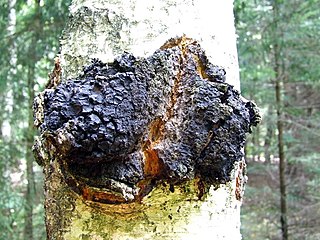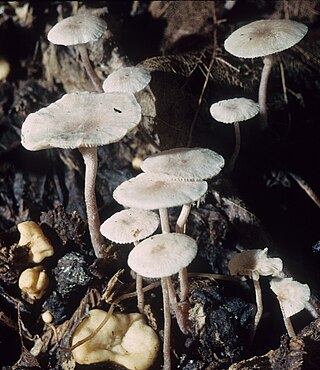
The loggerhead shrike is a passerine bird in the family Laniidae. It is the only member of the shrike family endemic to North America; the related northern shrike occurs north of its range, however it is also found in Siberia. It is nicknamed the butcherbird after its carnivorous tendencies, as it consumes prey such as insects, amphibians, lizards, small mammals and small birds, and some prey end up displayed and stored at a site, for example in a tree. Due to its small size and weak talons, this predatory bird relies on impaling its prey upon thorns or barbed wire for facilitated consumption. The numbers of loggerhead shrike have significantly decreased in recent years, especially in Midwestern, New England and Mid-Atlantic areas.

Louisiana State University is an American public land-grant research university in Baton Rouge, Louisiana. The university was founded in 1860 near Pineville, Louisiana, under the name Louisiana State Seminary of Learning & Military Academy. The current LSU main campus was dedicated in 1926, consists of more than 250 buildings constructed in the style of Italian Renaissance architect Andrea Palladio, and the main campus historic district occupies a 650-acre (260 ha) plateau on the banks of the Mississippi River.

The rose-breasted grosbeak, colloquially called "cut-throat" due to its coloration, is a large, seed-eating grosbeak in the cardinal family (Cardinalidae). It is primarily a foliage gleaner. Males have black heads, wings, backs, and tails, and a bright rose colored patch on their white breast. Males and females exhibit marked sexual dimorphism.

The Carolina wren is a common species of wren that is a resident in the eastern half of the United States of America, the extreme south of Ontario, Canada, and the extreme northeast of Mexico. Severe winters restrict the northern limits of their range, while favorable weather conditions lead to a northward extension of their breeding range. Their preferred habitat is in dense cover in forest, farm edges, and suburban areas. This wren is the state bird of South Carolina.

Tiger Stadium is an outdoor stadium located in Baton Rouge, Louisiana, on the campus of Louisiana State University. It is the home stadium of the LSU Tigers football team. Prior to 1924, LSU played its home games at State Field, which was located on the old LSU campus in Downtown Baton Rouge.

The Pete Maravich Assembly Center is a 13,215-seat multi-purpose arena in Baton Rouge, Louisiana. The arena opened in 1972. It was originally known as the LSU Assembly Center, but was renamed in honor of Pete Maravich, a Tiger basketball legend, shortly after his death in 1988. Louisiana governor Buddy Roemer signed an act to rename the building in Maravich's honor. Maravich never played in the arena as a collegian but played in it as a member of the Atlanta Hawks in a preseason game. But his exploits while at LSU led the university to build a larger home for the basketball team, which languished for decades in the shadow of the school's football program. The Maravich Center is known to locals as "The PMAC" or "Pete's Palace", or by its more nationally known nickname, "The Deaf Dome", coined by Dale Brown. The Maravich Center's neighbor, Tiger Stadium is known as "Death Valley".

The Hymenochaetales are an order of fungi in the class Agaricomycetes. The order in its current sense is based on molecular research and not on any unifying morphological characteristics. According to one 2008 estimate, the Hymenochaetales contain around 600 species worldwide, mostly corticioid fungi and poroid fungi, but also including several clavarioid fungi and agarics. Species of economic importance include wood decay fungi in the genera Phellinus and Inonotus sensu lato, some of which may cause losses in forestry. Therapeutic properties are claimed for Inonotus obliquus ("chaga") and Phellinus linteus, both of which are now commercially marketed.

The LSU Tigers football program, also known as the Fighting Tigers, represents Louisiana State University in college football. The Tigers compete in the Football Bowl Subdivision (FBS) of the National Collegiate Athletic Association (NCAA) and the Western Division of the Southeastern Conference (SEC).

Betulin is an abundant, naturally occurring triterpene. It is commonly isolated from the bark of birch trees. It forms up to 30% of the dry weight of silver birch bark. It is also found in birch sap. Inonotus obliquus contains betulin.

The 2008 BCS National Championship Game was played at the Louisiana Superdome in New Orleans, Louisiana, on Monday, January 7, 2008, and featured the No. 1 and No. 2 college football teams in the United States as determined by the BCS Poll to decide the BCS National Championship for the 2007 NCAA Division I FBS football season.

Inonotus obliquus, commonly called chaga, is a fungus in the family Hymenochaetaceae. It is parasitic on birch and other trees. The sterile conk is irregularly formed and resembles burnt charcoal. It is not the fruiting body of the fungus, but a sclerotium or mass of mycelium, mostly black because of a great amount of melanin. Some people consider chaga medicinal.

Inonotus hispidus, commonly known as shaggy bracket, is a fungus and a plant pathogen. This fungus has been used in eastern Asia as a popular remedy for many illnesses like cancer, diabetes, and other stomach ailments. In modern pharmacology, the Inonotus hispidus has aided in lowering blood glucose levels, showing anti-tumor responses and improving overall health in mice.

Meshimakobu and sanghuang / sanghwang, also known as mesima (English) or black hoof mushroom, is a mushroom in East Asia.

Inonotus is a genus of fungi in the family Hymenochaetaceae. The genus, described by Petter Karsten in 1879, is estimated to contain about 80 species sensu lato and 30 species sensu stricto.

Fuscoporia torulosa is a species of bracket fungus in the genus Fuscoporia, family Hymenochaetaceae. A wood-decay fungus, it causes a white rot of heartwood in dead and living hardwood trees in Europe, and in coniferous trees in North America.

Inonotus dryadeus, commonly known as oak bracket, warted oak polypore, weeping polypore or weeping conk, is an inedible species of fungus belonging to the genus Inonotus, which consists of bracket fungi with fibrous flesh. Most often found growing at the base of oak trees, it causes white rot and decay of the trunks. It secretes an amber liquid which weeps from tubes in its upper surface.

Collybia cookei is a species of fungus in the family Tricholomataceae, and one of three species in the genus Collybia. It is known from Europe, Asia, and North America. The fungus produces fruit bodies that usually grow on the decomposing remains of other mushrooms, like Meripilus giganteus, Inonotus hispidus, or species of Russula; occasionally fruit bodies are found on rich humus or well-decayed wood. The fungus produces small white mushrooms with caps up to 9 mm (0.35 in) in diameter, supported by thin stems that originate from a yellowish-brown sclerotium. The mushroom is difficult to distinguish from the other two species of Collybia unless an effort is made to examine the sclerotia, which is usually buried in the substrate. The edibility of the mushroom has not been determined.

Vernon Larnard Norwood is an American track and field athlete who specializes in the 400 meters.
Tropicoporus tropicalis is a mushroom of the family Hymenochaetaceae. Tropicoporus tropicalis is a wood-decaying basidiomycetes that rarely causes disease in animals and human, and is commonly found in humid climate such as Brazil. In its natural environment, the fungus is associated with white rot woody angiosperms, and has its annual fruiting body on tree trunks and branches. Tropicoporus tropicalis has two kinds of hyphae, generative and skeletal, that lack clamp connections.

Inocutis is a genus of nine species of polypore fungi in the family Hymenochaetaceae.

















